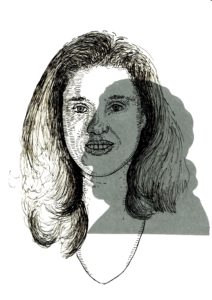Migration And Its Discontents: Israelis In Berlin And Homeland Politics
No comments yetIntroduction
Recent history has established Germany’s reputation as a new immigration country, facilitated by its economic boom and a relatively accommodating migration policy. An attractive destination for newcomers, Germany has surpassed many lands such as England and Canada which have long been recognized as immigration countries. Berlin in particular has drawn diverse populations of immigrants, including a considerable number of authors and artists whose works negotiate this relocation to the city. The gap between Germany’s notorious historical reputation for being hostile toward minority groups—embodied in the memories of World War II—and its attractiveness for expatriates has grown increasingly wider.
It is under these conditions that the growing community of Israelis living in Berlin has drawn attention from the German, Israeli, and global media. Israeli media and the publicist polemic have been preoccupied in recent years with the role of Israel’s living costs as a motivation for migration to Europe. In recent years, public protests in Israel have opted to shift public discussion away from its longtime focus on state security and onto the country’s increasingly high cost of living: Daily life necessities have “surpassed” the outside threat of anti-Semitic and anti-Israeli violence. In Israel, the perception of Germany as an attractive destination for emigrants elicits protests against the so-called opportunism of Israeli emigrants accused of “forgetting” the crimes committed by Germany during the Holocaust in favor of the satisfaction of mundane needs.[1] Former Israeli Minister of Finance, Yair Lapid, for example, has condemned the diffidence of Israelis who leave Israel because life is “easier in Berlin.”[2] According to Lapid, relocating in Berlin, the city which embodies historic insecurity for Jews, exemplifies the renouncement of national solidarity for the sake of economic comfort.
Berlin is characterized, often dismissively, as a “bubble” by Germans and foreigners alike—a desirable location for individuals belonging to minority groups or adhering to subaltern politics. My contention is that this cultural and imaginary construct functions as a microcosm allowing for the transmission of political identities to a new, foreign realm.
By examining recent literary representations which describe Berlin as a place of residence for Israelis, this essay argues that the description of Israeli migrants “escaping” their home country misses a crucial point: During their time in Berlin, Israelis do not simply abandon, but rather relocate Israeli politics to a new setting. This displacement dispels seminal expectations of Jewish diasporic life in Germany—both the Zionist discourse on European Jewish diaspora and Germany’s hegemonic memory culture. For one, the identification of the Israeli newcomers as “oriental” is at odds with an Israeli narrative of European Jews
returning to the continent after the trauma of the Holocaust. In the following readings of contemporary literary texts, I trace how sociopolitical conflicts salient to contemporary Israeli society—in particular, tensions between ethnic groups of Jewish Israelis—are negotiated through the act of travelling to Berlin or residing in the city. I follow how these conflicts are reformulated in a vocabulary pertaining to German memory culture and to German-Jewish encounters.
Arab Jews and the Berlin Crucible
A center for writing, translation work, and art, Berlin has retained its reputation as a locus of creativity and prosperity: a dramatically charged position in regards to those Jewish migrants who reside in a city remembered as the epicenter for the mass destruction of European Jewry.
Through manifold references to Berlin’s demography, Israeli prose challenges the victim-aggressor dialectic evoked through the Israeli presence in Germany. One may interpret Israeli migration to the country as an act of “return” for the victims, categorized on the one hand by a newfound, post-Holocaust German interest in Jewishness, and on the other hand, by the reestablishment of the pre-Holocaust European Diaspora. Yet, in the case of many Israelis, feelings of guilt experienced in their interactions with local Germans supposedly mirror recent memories of the Israelis’ own roles in the military occupation of Palestine.
This feeling of guilt reflects identification with a hegemonic collective which exercises (either past or present) power over a national minority. For the German characters in Israeli literature, guilt is a marker of belonging to the national hegemony, and of how engagement with the memory of the Holocaust functions as a reiteration of this power dynamic. [3] The duality ingrained in the figure of the Jew—first victim and now a sovereign citizen—can be challenged through a genealogy of “growing into” this position. The assumption that the Jew was once a victim and is now a potential perpetrator presumes a binary distinction between Jews—marked by their violent history in Europe—and Arabs.
This distinction takes for granted Ashkenazi Jews (Jews of European origins) as solo agents; it perpetuates the establishment of the Israeli national narrative upon disregard for the marginalized narratives of Mizrahi Jews (a definition which usually refers to Jews of non-European origins, particularly those from the Middle East).[4]
In his recently published volume of short stories, Berlin-based Israeli author Mati Shemoelof presents several texts featuring a narrator who describes himself as a marginal subject in Israel and as an outcast to the narrative that the country allocates for its emigres.
Shemoelof’s first book of prose details the experiences of a Mizrahi Israeli who migrates to Berlin in part due to economic hardship in Israel (Israel’s economic crises effect marginalized minorities to a greater extent than the rest of the population). At the beginning of one of these stories, the narrator loses a tooth. Over the course of the story, he examines this misfortune as a means by which to contemplate on the greater circumstances of his migration to Berlin:
I am walking inside the rapid transit train back to my home. I almost allow myself to get the stops wrong. I curse migration and all the difficulties that it bears. I feel the city is standing against me. That I have to fight it to move on somewhere. […] What will happen in the future when something else goes wrong, where will I get the huge sums of money required in order to live as an Iraqi exile in a European city. (Shemoelof 288)
The charged image of a Jew travelling via train in Germany and reporting his anxiety transitions dramatically when, in the end of the passage, it is revealed that the core of the narrator’s insecurity in Europe is not his Jewishness, but rather his Arabic origins. At the same time, the scene negotiates the narrator’s status as a Mizrahi Israeli—the social position that elicited his migration. Experimenting with the precarious status of belonging to a minority group in Europe, the narrator produces both a Mizrahi as well as an Ashkenazi experience, participating thereby in a narrative constitutive to multiple facets of Israeli identity.
The Israeli visitor to Berlin may define his identity (nearly all texts dealing with this phenomenon feature a male protagonist) in terms of transgressing a rigid distinction between Arabs and Jews. Mizrahi Israeli authors problematize their simplistic categorization as Jewish victims who return to Europe, highlighting instead the necessary negotiation of multiple identities while inhabiting the multi-ethnic neighborhoods of contemporary Berlin. As Andreas Huyssen has argued, one inability of Turkish migrants to take part in the “German past” stems from the focus of the country’s public memory discourse on World War II of German perpetrators and Jewish victims (Huyssen 164). The inability of German Muslims to wear the shoes of the perpetrator is mirrored in Israeli-Mizrahi literature by the inability of Jews of Arabic origins to wear the shoes of the victim.
Israeli National Narrative and the “Return” to Europe
In Israeli collective memory, the fate of German Jewry has become a paragon for the position that the State of Israel was established through a departure from Europe—a rejection or renouncement of Jewish life on the continent. Gershom Scholem, one of the eminent public intellectuals in the young state, explicated this position (establishing it, thereby, as inherent to Israel’s national narrative) in his famous 1964 letter to the editor of a Festschrift for Margarete Susman. The editor had solicited Scholem’s contribution to express a testament to German-Jewish dialogue. This prompting provoked Scholem, who instead titled his contribution “Against the Myth of the German-Jewish Dialogue.”
Scholem’s text positions the figures of the modern German and the modern Jew in a (failed) dialogue with one another:
I deny that there has ever been such a German-Jewish dialogue in any genuine sense whatsoever, i.e., as a historical phenomenon. […] To be sure, the Jews attempted a dialogue with the Germans, starting from all possible points of view and situations, demandingly, imploringly, and entreatingly, servile and defiant, with a dignity employing all manner of tones and a godforsaken lack of dignity, and today, when the symphony is over, the time may be ripe for studying their motifs and for attempting a critique of their tones. (Scholem 61)
The letter centers its argumentation around a binary distinction: Jews are a distinct entity from Germans. It defines this duality as that of two parallels which do not meet despite incessant Jewish efforts to achieve some form of conciliation. The letter portrays “the German” as the national subject which refused dialogue with the Jew. The figure of the Jew, in return, is conditioned by the failed dialogue which he has tried in vain to hold with his German counterpart.
The letter’s presumptions constitute some seminal cultural and ethnic tensions in contemporary Israeli society. The text defines Israeli Jewishness through the experience of German Jews who have been excluded from the European community. Interventions of so-called ‘oriental’ images within the German-Jewish dialogue—Arabic or Turkish—render the construct of the “Orient” as an active position within the identities of Jewish life in Germany.
The idea that exclusion (and expulsion) from Europe is the constitutive experience of modern Israelis is reiterated in accounts depicting the growing phenomenon of Israeli migration to Berlin in the present. The cover to Oz-Salzberger’s monograph on the subject contains the following citation:
Europe, which shaped and educated and starved and killed and spewed us continually, is looking at us today—Jews and Arabs, Sephardim and Ashkenazim—
in cold remoteness. […] And this is why Berlin is, after all, a possible gateway to Europe. Precisely because it is such a dark gate. A bloody gate, with a warning sign displayed above it. And it can also focus the Israelis’ longing for Europe through an unequaled lens. It’s right to start here the journey toward our passion for Europe.
This dire depiction of Berlin emerges through a charged metaphor: in the context of the description of Europe as a locus that “starved and killed” the Jews, the gate evokes in Israeli collective memory the entrance gate to Auschwitz with the warning sign above it. Albeit geographically remote, this site becomes a paragon for the city. Telling is the inclusion of all Israelis—Israeli Arabs, as well—as one entity which has been “educated” by Europe, tortured by it, and which continues to be drawn to the continent. Israelis who choose not only to visit but also to migrate to Berlin thus relocate to a locus of terror. In doing so, they return to the crucible of Israeli identity. Paradoxically, it is in the very act of departing from Israel that they tie their lives, according to this narrative, to the cultural icon which binds together the Israeli population. How do texts evince alternative accounts of the migration from Israel?
As Hannan Hever has shown, the narrative of migration from Europe to Israel/Palestine, which is constitutive of Modern Hebrew literature excludes non-European authors from the Israeli literary canon. Hever has argued that such images as the crossing of the sea on the way to the Jewish homeland (images perceived as the climactic moments in Israeli literature) cannot be emulated by works of authors who are recognized as having non-European roots (Hever 33-34). The presence of Germany in subaltern Israeli literature demonstrates an additional, provocative facet in rewriting the country’s hegemonic
national narrative. Such literature presents the conflicted history of European Jews—and their ultimate departure from Europe—as tropes modulated by the agendas and necessities of the Zionist project in its early stages.
The potential of Berlin to function as a locus from which alternative Jewish histories can be imagined is also reflected in David Adaf’s novel De Urbibus Inferis (“From Cities Below”)—a work by another author of Mizrahi origin. Adaf’s novel centers on a detective-like historical examination of marginalized Jewish sects. The novel depicts a secret esoteric order in Judaism, “the Rose of Judah,” which competed in antiquity, so goes the narrative, against Judaism’s hegemonic stream led by Simon bar Kokhba, a well-known mythical sage. The trilogy proposes that bar Kokhba orchestrated the destruction of those who resisted him, culminating in the defeat of Mizrahi leaders by Ashkenazi Jews who—according to this narrative—then took the lead in Jewish tradition. It is during their stay in Berlin that the novel’s characters obtain the keys to solving the mystery of how Jewish tradition has been established through the oppression of marginal sects associated with Jewish-Arab identity.
The significance of Berlin in negotiating the assumptions at the core of modern Jewish identity is signaled in the novel’s very first line:
I wouldn’t have thought that I would gather the strength to complete this work, had I not resided in Berlin. Maybe since I knew that I was dealing for the first time with human beings whose existence was beyond writing, whose voices demand that I adapt my being and shut it off, at the same time, to let it slip away down here from the ghostly world of those, wherever they are, who await birth. (Adaf 7)
The beginning of the sentence proposes that it is the intradiegetic narrator’s time in Berlin which provides him with the energy needed for writing his book. However, a closer look at the sentence dispels this impression; the narrator’s stay in Berlin only allows the narrator to think that he may have the energy needed for this undertaking. Berlin is depicted in the novel as a “city from below”: the narrator’s descriptions of the city highlight its open sexual atmosphere and decadence, as well as the overwhelming number of (other) Israeli visitors.
In an ironic reference to the city’s multicultural identity, one of the novel’s protagonists—a Mizrahi woman defined by her underprivileged upbringing in a small town—comments on Kreuzberg “for Turkish shawarma and second-hand stores one doesn’t need to go to Berlin” (183). This dismissiveness toward East Berlin’s multiculturalism is ironic given the protagonist’s family origins. Her socioeconomic background ultimately provokes tensions between her and her (presumably Ashkenazi) boyfriend, and leads to their breakup after she sleeps with a German man as if in reaction to her marginalized Jewish identity. It is during her short encounter with this German man that the female protagonist is exposed to the secret tradition of “the Rose of Judah”: her sexual partner has a tattoo on his chest of the order’s mystical symbol. Following the narrator’s position that Berlin is a locus for ghostly beings “awaiting their birth,” the protagonist appears to experiment with alternate identities which problematize her own marginalized position in Israeli society.
Europe’s Oriental Nomads
Does the creation of fiction go beyond mere possibility and evince Germany as a concrete locus for Israeli migrants of subaltern identities? Contemporary Israeli texts negotiate their participation in the hegemonic victim-perpetrator narrative by challenging the figure of the victim-aggressor attributed to Israelis in their presence in Germany. In Germany, feelings of guilt presume association with a hegemonic collective that exercises power (past or present) over a national minority. German residents of Turkish origins thus expose national and ethnic biases which are perpetuated under the auspices of guilt (Adelson 84).
The references to Germany’s national minorities in Mizrahi Israeli literature are telling. They create a homology between older migrants to Europe and certain Israeli visitors to Berlin who conceptualize themselves through their presence in Germany as outsiders to their own country’s memory politics.The exclusion of some ethnic groups from Germany’s national narrative resembles common expectations regarding the Israeli presence in Germany including the exclusion of subaltern identities from the narrative of Jewish persecution in Europe. Contemporary prose may negotiate common accounts of the visit
to Germany as an act of “revenge,” “reconciliation,” or “escape.” In these representations of Israeli life in Berlin, Germany constitutes a site for subversive affective identification for Israel’s national minorities—subjects excluded from the country’s hegemonic self-portrayal.
Notes
[1] Works on Israeli migration to Germany which are often based on oral history have described Israeli presence in the country as a derivation of a post-traumatic attitude toward German culture. Fania Oz-Salzberger’s 2001 monograph Israelis, Berlin has become a well-known example of this trend. Her essayistic account recognizes the cultural prominence of the Israeli migration to the city when this phenomenon was still new; due to its popularity, it has established that Israeli migrants to Berlin are enchanted by their uncanny return to Germany. Similarly, sociologist Gad Yair presents the subjects in his 2015 study of Israeli migration to Germany the assumption that their lives in the country encompass incessant traumatic connection to German culture and language.
[2] A comment made on his Facebook page that provoked polemical responses in Israeli media. See TheMarker, October 1, 2013. All translations from the Hebrew are my own.
[3] See for example the recent anthology of short stories, published concurrently in German and in Hebrew,Won’t Forget, Go Out Dancing (2015) presenting texts by Israeli and German authors on experiences in the other country.
[4] In Modern Hebrew, the category “Mizrahim” marks Jews whose origins are often from countries such as Iraq, Iran, Yemen and Morocco). For an exploration of the tension between Mizrahi authors and the canon of Modern Hebrew literature—deriving from Mizrahi Jews’ identification as “Arab” see Levy’s recent comprehensive study. Levy’s work presents the marginalization of Mizrahi writing as fundamental to the canon of Modern Hebrew literature since its establishment (Levy 60-102). As Halevi-Wise writes, “In Israel, where Mizrahim represent a cultural—albeit not a demographic—minority, Mizrahi cultural contributions are invigorated by a struggle to preserve and legitimatize the backgrounds of Jews from Arab lands against
an ideology with preconceived social, ethical and artistic standards for Mizrahi conduct” (Halevi-Wise 49).
Works Cited
Adaf, Shimon. De Urbibus Inferis. Yehudah: Kinneret, Zmora-Bitan, 2012. [Hebrew]
Adelson, Leslie A. The Turkish Turn in Contemporary German Literature: Toward a New Critical Grammar of Migration. Houndsmills: Palgrave Macmillan, 2005.
Oz-Salzberger, Fania. Israelis, Berlin. Jerusalem: Keter, 2001. [Hebrew]
Gutwein, Daniel. “The Privatization of the Holocaust: Memory, Historiography, and Politics.” Israel Studies, Vol. 14, No. 1, (Spring, 2009): 36-64.
Hever, Hannah. “We have not arrived from the sea: a Mizrahi literary geography.” Social Identities 10, no. 1 (2004): 31-51.
Huyssen, Andreas. “Diaspora and Nation: Migration into Other Pasts.” New German Critique, No. 88 (2003): 147-164.
Kron, Norbert and Amichai Shalev (eds.) Won’t Forget, Go Out Dancing. Tel Aviv: Ilamor, 2015 [Hebrew].
Levy, Lital. Poetic Trespass: Writing between Hebrew and Arabic in Israel/Palestine. Princeton: Princeton University Press. 2014.
Scholem, Gershom. “Against the Myth of the German-Jewish Dialogue.” On Jews and Judaism in Crisis: Selected Essays, 61-64. New York: Schocken, 1976.
Shemoelof, Mati. Remnants of the Cursed Book. Or Yehudah: Kinneret, Zmora-Bitan, 2014 [Hebrew].
Yair, Gad. Love is Not Praktish: The Israeli Look at Germany. Tel Aviv: Hakibbutz Hameuchad, 2015. [Hebrew]
Original published: Yael Almog, Ph.D. ~ Migration and its Discontents: Israelis in Berlin and Homeland Politics.” TRANSIT: A Journal of Travel, Migration, and Multiculturalism in the German-speaking World, Vol 10, No. 1, December 2015.
About the author
Yael Almog, Ph.D ~ Faculty Member I Wissenschaftliche Mitarbeiterin Dept. of Evangelical Theology and Jewish Thought, The Goethe University Frankfurt
Most of her publications can be read and downloaded at https://uni-frankfurt1.academia.edu/YaelAlmog
You May Also Like
Comments
Leave a Reply






